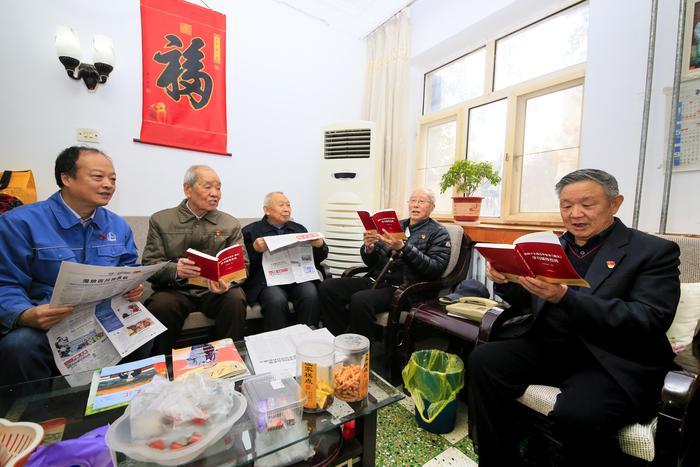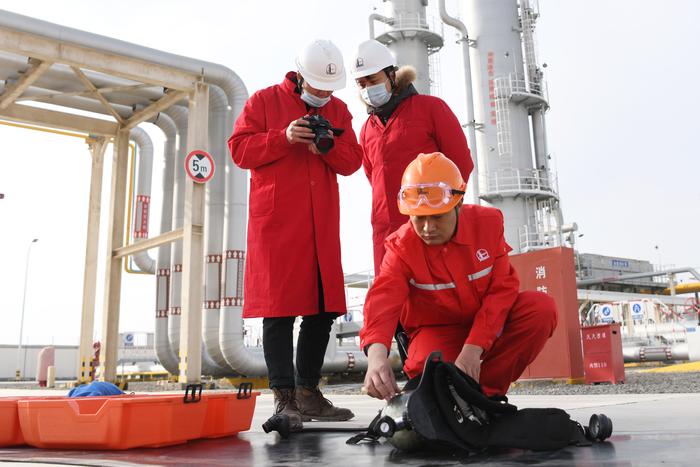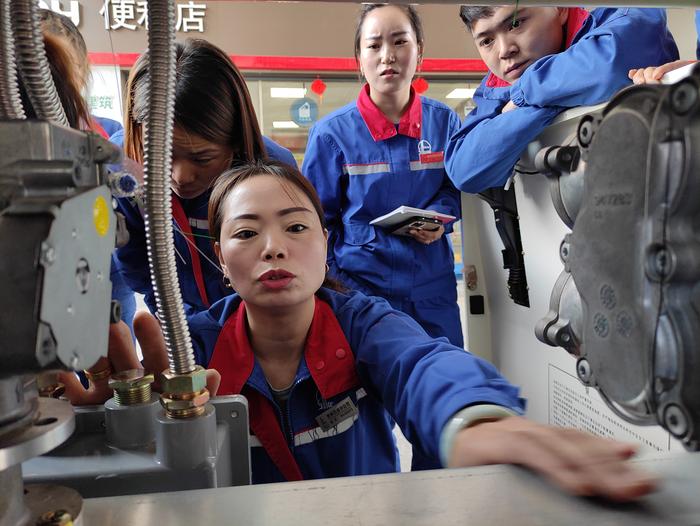|
| 2020-11-26 来源: 中国石化新闻网 |
| 石化新闻 |
中国石化新闻网讯 据今日油价11月23日报道,疫苗研发方面的进展以及预计欧佩克+将在不到两周内决定将目前的减产延期三个月,而不是从2021年1月起放松供应限制,这让看涨者寄希望于明年石油市场将恢复一些平衡,推动价格走高。 目前,分析师和机构的普遍共识是,2021年油价确实会上涨,因为随着全球经济和石油需求复苏,高于平均水平的库存将减少。 最近几周的几个看涨信号让石油市场参与者和分析师对明年的石油市场更加乐观,尽管目前第二波新冠肺炎感染正在席卷欧洲和世界最大的石油消费国美国。 首先,据路透市场分析师John Kemp根据EIA数据预估,美国原油和石油库存仍高于五年平均水平,但已从今年稍早的高位回落。其次,最近几周,亚洲的石油需求明显增强,这让石油市场看到了希望,即至少有一个地区第四季度的需求强劲。最后,对一种有效疫苗很快获得FDA批准的希望,也给人们带来了:生活可能会在2021年的某个时候恢复到某种正常状态的乐观预期。 目前对油价的预期是上涨的,尤其是2021年下半年。EIA在其11月的短期能源展望(STEO)中预计,随着全球石油需求上升,2021年库存的减少将支持油价上行,预计布伦特原油均价将从每桶44美元上涨至每桶47美元。 在疫苗进展公布前,路透社分析师进行的最新月度调查显示,预计2021年布兰特原油均价为49.76美元/桶,低于此前预估的50.41美元/桶。然而,油价仍有下行风险,因为美国和欧洲激增的新冠肺炎病例促使重新实施封锁、宵禁等限制措施,这将在短期内对经济活动和运输需求造成压力。 石油需求将受到多大的打击,以及发达经济体和需求将以多快的速度从第二波冲击中复苏,这些不确定性将继续对油价构成下行压力,至少在明年初是这样。国际能源机构(IEA)上周表示,疫苗对石油需求和现货油价的影响预计不会在2021年上半年显现。 此外,GasBuddy的一项调查显示,未来一周,美国的燃料需求不会像以往的感恩节一样出现出行增长,因为只有35%的美国人会去度假,低于2019年的65%,即使感恩节汽油价格将是2016年以来最低的。 GasBuddy石油分析主管帕特里克哈恩(Patrick De Haan)表示:“调查结果显示,尽管感恩节汽油价格处于多年来的最低水平,但车主们的焦虑情绪仍在持续,突显出我们在当前疫情中面临的挑战。” 假期出行平淡,尽管汽油产量下降,但美国汽油库存仍将增加。 EIA在本周库存报告中称,截至11月13日当周,汽油库存增加260万桶,而此前一周减少了230万桶。上周汽油平均日产量为910万桶,一周前为930万桶。馏分油库存有所下降,但仍比五年平均水平高出约11%。 对美国库存和油价的另一个担忧是,库欣(纽约商品交易所原油期货合约的指定交割点)的库存已升至产能的81%。EIA数据显示,11月13日当周,库欣商业原油库存增加1.2%。目前的库存为6160万桶,比去年同期高出39.3%。 对石油和燃料需求的恢复的速度以及明年库存减少的速度将决定石油价格的趋势,直到有足够多的人能够获得安全和有效的疫苗。 Saxo Bank大宗商品策略主管奥勒 汉森(Ole Hansen)本周表示:“疫苗一旦推出,应该能确保石油需求恢复到正常水平。但欧佩克+持有的首批库存水平和闲置产能需要降低,因此,可能需要到2021年下半年油价才能出现实质性反弹。” 王佳晶 摘译自 今日油价 原文如下: How High Can Oil Prices Go In 2021? Progress in vaccine development and expectations that OPEC+ will decide in less than two weeks to roll over the current cuts for three months instead of easing them from January 2021 give bulls hopes that the oil market will regain some semblance of a balance next year, pushing prices higher. Currently, the general consensus among analysts and agencies is that oil prices will indeed see an upside in 2021 as above-average inventories will draw down with a global economic and oil demand recovery. Several bullish signals in recent weeks have made oil market participants and analysts more optimistic about the oil market next year, despite the current second wave of COVID-19 infections sweeping across Europe and the world’s biggest petroleum consumer, the United States. First, crude oil and petroleum inventories in the U.S. are still above five-year average levels, but they have dropped from their peaks earlier this year, according to estimates from Reuters market analyst John Kemp based on EIA data. Next, oil demand in Asia has visibly strengthened in recent weeks, giving the oil market hope that at least in one region, demand is strong in the fourth quarter. Then, hopes of an effective vaccine receiving FDA approval soon also instill hopes that life could return to some form of normality at some point in 2021. these factors resulted this week in the shallowest contango in the front-month and six-month spread in the Brent Crude futures market since July, suggesting that market participants now expect vaccines and economic recovery next year to help market rebalancing, which would push oil prices higher. Current expectations about oil prices point to gains, especially in the latter half of 2021. The EIA expects in its November Short-Term Energy Outlook (STEO) that as global oil demand rises, inventory draws in 2021 will cause some upward oil price pressures, and Brent is expected to average $47 a barrel next year, up from $44 per barrel early on Friday. The latest monthly Reuters poll of analysts, before the vaccine progress announcements, expected Brent prices to average $49.76 per barrel in 2021, down compared to $50.41 expected in the previous survey. However, risks to oil prices are likely still skewed to the downside, as surging COVID cases in the U.S. and Europe are prompting renewed lockdowns, curfews, mask mandates, and restrictions, which would weigh on economic activity and transportation demand in the near term. The uncertainty about how bad oil demand will be hit and how fast developed economies and demand would recover from this second wave will continue to pressure prices to the downside, at least early next year. The vaccine impact on oil demand and spot oil prices is not expected to manifest in the first half of 2021, the International Energy Agency (IEA) said last week. Moreover, in the coming week, fuel demand in the U.S. will not receive its usual Thanksgiving travel increase as only 35 percent of Americans will be traveling for the holiday, down from 65 percent in 2019, even if Thanksgiving gasoline prices will be the lowest since 2016, a GasBuddy survey showed. “The survey results show continued anxiety from motorists even with the lowest Thanksgiving gas prices in years, highlighting the challenges we’re facing in this pandemic,” said Patrick De Haan, head of petroleum analysis at GasBuddy. The muted holiday traveling will come after a build in U.S. gasoline inventories even if gasoline production dropped. In the week to November 13, gasoline inventories rose by 2.6 million barrels, compared with a decline of 2.3 million barrels for the previous week, the EIA said in this week’s inventory report. Gasoline production averaged 9.1 million bpd last week, versus 9.3 million bpd a week earlier. Distillate inventories dropped, but they are still some 11 percent higher than the five-year average for this time of the year. Another concern for U.S. inventories and prices is that stocks at Cushing—the designated delivery point for NYMEX crude oil futures contracts—have risen to 81 percent of capacity. EIA data showed that commercial crude oil stocks at Cushing rose by 1.2 percent in the week to November 13. At 61.6 million barrels, inventories are 39.3 percent higher than at this time last year. The pace of recovery from the current challenges to oil and fuel demand and the rate of stock drawdowns next year will determine the trend in oil prices until safe and effective vaccines become available to a critical mass of people. “Once rolled out, the vaccine should ensure a recovery in oil demand back towards trend. But first inventory levels and spare capacity held by OPEC+ need to be reduced and this may take us towards the second half of 2021 before a meaningful oil price recovery can occur,” Ole Hansen, Head of Commodity Strategy at Saxo Bank, said this week. |








